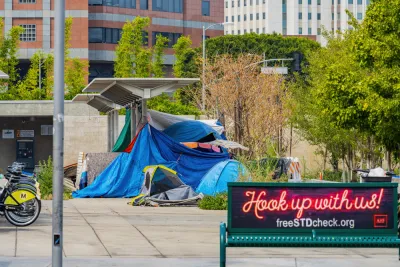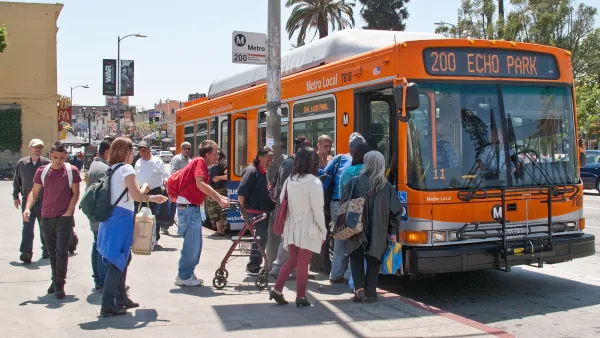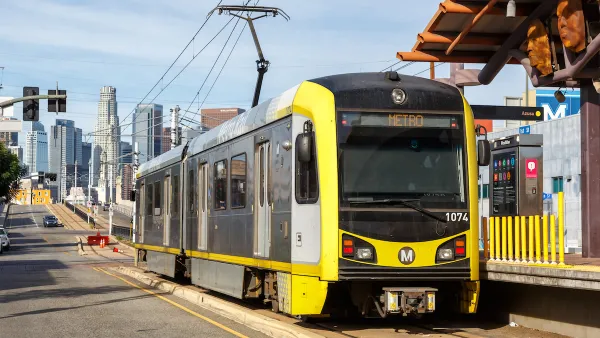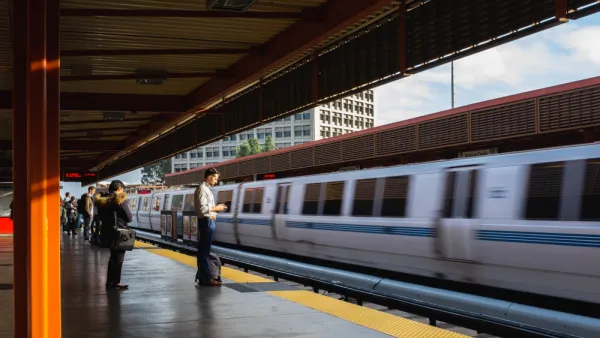An article by the L.A. Times earlier this week has raised the temperature of the debate about drug users and crime on rail transit. Concerns about public safety on transit are a common symptom of post-pandemic transit around the country.

“Since January, 22 people have died on Metro buses and trains, mostly from suspected overdoses — more people than all of 2022. Serious crimes — such as robbery, rape and aggravated assault — soared 24% last year compared with the previous,” according to an article by Rachel Uranga for the Los Angeles Times.
The article has been the talk of social media all week, with advocates and public officials weighing in on either side of the issue. The article suggests that ridership on the Los Angeles County Metropolitan Transportation Authority (Metro) is suffering as a result of the perceived public safety risks on the system—particularly on the system’s rail lines.
Commuters have abandoned large swaths of the Metro train system. Even before the pandemic, ridership in the region was never as high as other big-city rail systems. For January, ridership on the Gold Line was 30% of the pre-pandemic levels, and the Red Line was 56% of them.
Eventually, the article discusses the Ambassador Program, launched by metro at the beginning of March after being announced in June 2022:
In response to such concerns, transit officials committed $122 million over the last year trying to make the system — composed of 105 rail stations and more than 12,000 bus stops — feel safer by placing 300 unarmed “ambassadors” to report crimes and help passengers. It’s part of what officials like to tout as a “multilayered” approach to improving a system that’s become emptier and more dangerous over recent years — even as billions have been sunk into expansion of the rail lines.
The article also provides details about the fentanyl crisis in Los Angeles and the ongoing debate about how best to react. In the meantime, transit is in the midst of a crisis of multiple dimensions—with ridership, funding, policing, operator shortages, and public perception, just to name a few.
FULL STORY: L.A. riders bail on Metro trains amid ‘horror’ of deadly drug overdoses, crime

National Parks Layoffs Will Cause Communities to Lose Billions
Thousands of essential park workers were laid off this week, just before the busy spring break season.

Retro-silient?: America’s First “Eco-burb,” The Woodlands Turns 50
A master-planned community north of Houston offers lessons on green infrastructure and resilient design, but falls short of its founder’s lofty affordability and walkability goals.

Delivering for America Plan Will Downgrade Mail Service in at Least 49.5 Percent of Zip Codes
Republican and Democrat lawmakers criticize the plan for its disproportionate negative impact on rural communities.

Test News Post 1
This is a summary

Test News Headline 46
Test for the image on the front page.

Balancing Bombs and Butterflies: How the National Guard Protects a Rare Species
The National Guard at Fort Indiantown Gap uses GIS technology and land management strategies to balance military training with conservation efforts, ensuring the survival of the rare eastern regal fritillary butterfly.
Urban Design for Planners 1: Software Tools
This six-course series explores essential urban design concepts using open source software and equips planners with the tools they need to participate fully in the urban design process.
Planning for Universal Design
Learn the tools for implementing Universal Design in planning regulations.
EMC Planning Group, Inc.
Planetizen
Planetizen
Mpact (formerly Rail~Volution)
Great Falls Development Authority, Inc.
HUDs Office of Policy Development and Research
NYU Wagner Graduate School of Public Service





























